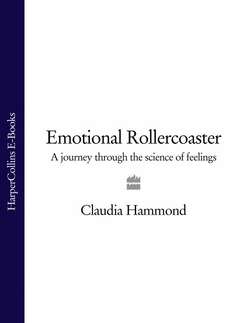Читать книгу Emotional Rollercoaster: A Journey Through the Science of Feelings - Claudia Hammond - Страница 6
One Joy
ОглавлениеLess than a week after newspapers claimed that as a result of global warming snow might never be seen in London again, I woke one Wednesday in January 2003 and everything sounded slightly muffled – no pushchair wheels catching on the bumpy paving stones, no metal trolleys jangling against the kerb outside the shop. It could only mean one thing – snow. The only sounds which were louder than usual were the cries of children, suddenly inspired to skip to school, thrilled with the free entertainment. Working at home that day, I was distracted by watching snowflakes from my desk and wondering whether the snowflakes were fatter than they used to be. By the afternoon I could resist the snow no longer and my partner and I walked up to Primrose Hill, a small green park from which you can see the pointed cages of London Zoo and beyond it, London’s landmarks laid out in a line – the Dome, Canary Wharf, the London Eye and the Post Office Tower. We’d assumed that as it was a Wednesday afternoon the park would be fairly empty, but in fact there were hundreds of people. Reaching the flat circle of tarmac at the top of the hill, we detected something unusual about the atmosphere, different even from sunny weekends when people bring kites and picnics. That difference was the presence of joy – pure joy at the unexpected snowfall. Strangers were grinning at each other with the kind of festive, communal happiness you might expect to find on New Year’s Eve. People climbed the hill carrying cardboard boxes and plastic bags – anything, so long as they could slide. Despite the absence of children there was already a coterie of snowmen, one with tens of sticks for spiky hair. Three men had rather optimistically brought skis and were side-stepping their way up the hill, accompanied by a local newspaper photographer hoping to catch them in action. A couple were tearing off bin bags from a roll and handing them out to anyone brave enough to throw themselves down the hill. You could see from their smiles that everyone was thrilled. This was unexpected, snatched joy. And these weren’t children. The children were all in school, but while they worked, adults were out playing. A group started rolling a massive snowball. People joined in and moments later a snowball of James and the Giant Peach proportions was rolled off the side of the hill, soon smashing against a tree on its way down and disintegrating, to a delighted cheer from the crowd.
This joy was unplanned but provided we have the opportunity we all invest time and effort into the creation of joyful moments – saving up for holidays, arranging to see friends, finding somewhere nice to eat – with the hope of creating happy times. Food, sex or even a hot bath can make you feel happy, but there seems to be more to joy than the physical pleasure. Joy is all-encompassing, whether it lasts for a moment or for longer. One little boy I interviewed told me that after he had won a football match he had felt joyful for exactly three days.
If people are asked to list emotions, happiness is often the first one they name. Most emotions researchers include it in their list of basic emotions, but they tend to refer to it as joy because joy has more of a moment-to-moment quality. While happiness can be a background emotion, joy indicates the quality of feeling at one particular moment.
